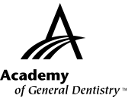|
Exercise No. 344
Subject Code: 737
Physical Evaluation
The 15 questions for this exercise are based on the article, Polysomnographic analysis of bruxism, on pages 56-60. This exercise was developed by Gustav Gates, DDS, MAGD, in association with the General Dentistry Self-Instruction committee.
|
Reading the article and successfully completing the exercise will enable you to:
- define bruxism;
- understand the use of polysonography in identifying bruxism; and
- recognize the relationship of bruxism and sleep disorders.
|

